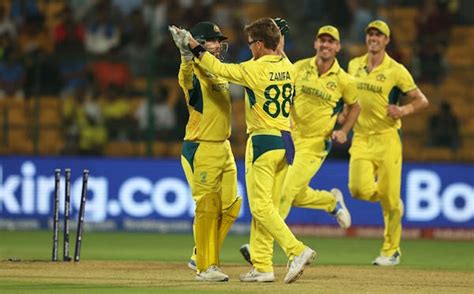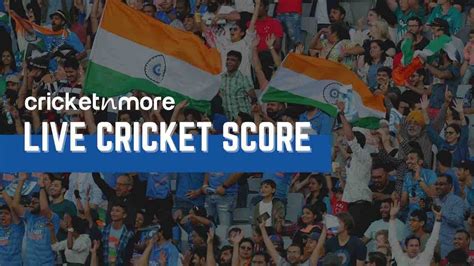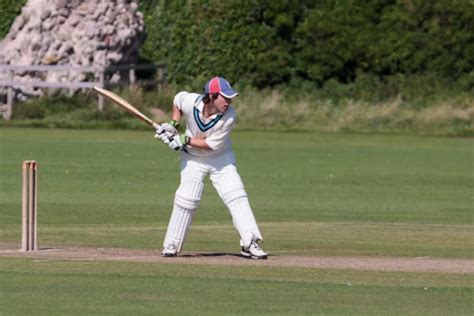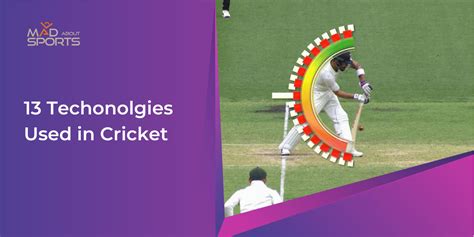Explore the impact of social media on cricket promotion, fan engagement, influencer roles, viewership metrics, and future trends in the game.In today’s digital age, social media has emerged as a powerful tool for promoting sports, with cricket being no exception. As one of the most beloved sports worldwide, cricket relies heavily on social media platforms to engage fans, enhance visibility, and drive viewership. This article delves into the multifaceted role that social media plays in promoting cricket, exploring how platforms like Twitter, Instagram, and Facebook effectively connect players and fans alike. We’ll also highlight the significant influence of social media personalities and explore emerging trends that are reshaping the cricket landscape. Join us as we unravel how social media not only elevates cricket’s popularity but also measures its impact on audiences, paving the way for its future in the realm of sports.
Understanding The Role Of Social Media In Cricket Promotion
Social media has transformed the landscape of sports marketing, and cricket is no exception. The role of social media in promoting cricket encompasses various facets that engage fans and foster community interaction. From live-match updates to interactive content, social platforms have become essential tools for engaging cricket enthusiasts around the globe.
One of the key aspects of the role of social media in cricket promotion is its ability to provide real-time engagement. Fans can share their thoughts and experiences during matches, contributing to a vibrant online dialogue that enhances the overall viewing experience. Through platforms like Twitter and Instagram, users can instantly comment on plays, share highlights, and express support or criticism, creating a dynamic and interactive atmosphere that traditional media cannot replicate.
Moreover, social media serves as a powerful tool for brands sponsoring cricket events and teams. By leveraging the large audiences on platforms like Facebook and TikTok, brands can reach potential customers in creative ways, from sponsoring posts and stories to engaging in cross-promotional activities. This not only boosts visibility but also strengthens brand loyalty among cricket fans.
The role of social media also involves showcasing behind-the-scenes content, athlete interviews, and fan stories. This personal connection enhances fan loyalty, making them feel more invested in the sport and their favorite players. As fans share their experiences and content related to cricket, it contributes to a broader narrative that keeps the community engaged and excited about upcoming events.
Social media analytics provide insights into fan behavior and preferences, which can inform marketing strategies and promotional campaigns. Understanding these trends is vital for stakeholders within the cricket domain, as it allows them to tailor their content and outreach efforts effectively.
The role of social media in cricket promotion is multifaceted and ever-evolving. As technology continues to advance, so too will the methods by which cricket interacts with fans, ensuring that the sport remains relevant and engaging in an increasingly digital world.
How Social Media Platforms Engage Cricket Fans Effectively
Social media platforms have transformed the way cricket is consumed and experienced by fans worldwide. With the advent of sites like Twitter, Facebook, Instagram, and TikTok, the game has entered a new era of engagement, where the role of these platforms is crucial in connecting players, teams, and fans.
One of the primary methods by which social media engages cricket fans is through real-time interaction. During matches, platforms like Twitter serve as a live commentary tool, allowing fans to share their thoughts, reactions, and opinions instantly. This immediacy creates a sense of community as fans rally together to support their teams or discuss game strategies.
Moreover, social media enables exclusive content sharing, such as behind-the-scenes footage, player interviews, and highlights, which captivates the audience. Fans get almost instant access to their favorite players and teams, fostering loyalty and ongoing engagement. Instagram Stories and Facebook Live sessions have become popular tools for players and teams to connect with their audience away from the pitch.
Engagement is further enhanced through polls, quizzes, and contests that encourage fans to participate actively. These interactive elements not only entertain fans but also give them a sense of involvement in the sporting experience. By making fans feel like a part of the action, social media effectively strengthens their emotional connection to the game.
Additionally, user-generated content plays a significant role in fan engagement. Supporters often share their own photos, videos, and experiences related to cricket, thus creating organic promotion for the sport. When fans see fellow enthusiasts sharing their experiences, it builds a community atmosphere and motivates others to join in.
Social media platforms engage cricket fans effectively by enabling real-time interaction, providing exclusive content, fostering participation through interactive features, and promoting a sense of community. These elements help enhance the role of social media in keeping fans connected to their beloved sport, ultimately leading to a more immersive experience.
The Role Of Influencers In Boosting Cricket’s Popularity
In recent years, social media influencers have become pivotal in advancing the cricketing landscape. Their ability to connect with audiences on a personal level allows them to effectively promote the sport, creating a significant impact on fan engagement and viewership.
These influencers often possess large followings, and their endorsement of cricket-related content can instantly reach thousands, if not millions, of followers. They share insights, behind-the-scenes content, and personal stories that resonate with fans. This authenticity in their communication helps build a deeper connection between cricket, players, and audiences, enhancing the overall fan experience.
The role of influencers is not restricted to just promoting matches or players; they also engage in discussions around cricketing events, share analytics, and encourage fan participation through contests and live chats. By sparking conversations and debates, influencers contribute to a thriving and dynamic community, which ultimately bolsters cricket’s popularity.
Moreover, collaborations between cricket boards and influencers can lead to innovative campaigns that attract younger audiences. For instance, campaigns surrounding major tournaments or players can be amplified through influencer content, which often comes in more relatable formats like short video clips, memes, and engaging posts that appeal to the youth demographic.
The integration of social media influencers in cricket promotion exemplifies how modern marketing techniques can be utilized in sports. Their role in fostering a passionate community and driving interest in cricket cannot be overstated, making them invaluable assets in any promotional strategy aiming to boost the sport’s visibility and viewership.
Measuring The Impact Of Social Media On Cricket Viewership
In today’s digital landscape, The Role of social media in affecting cricket viewership cannot be understated. With millions of fans actively engaging on various platforms, it is essential for stakeholders to understand how these interactions translate into viewership numbers.
One way to measure this impact is by analyzing engagement metrics such as likes, shares, comments, and mentions. These metrics often correlate with increased interest in matches and tournaments. For instance, when a significant cricket event is trending on platforms like Twitter or Instagram, there is typically a corresponding spike in television ratings and online streaming.
Moreover, social media analytics tools have made it easier than ever to track audience sentiment and behaviors. Through these tools, cricket organizations can gauge which players, matches, or events generate the most buzz, allowing them to thrive on strategic marketing and promotional efforts that align with fan interests.
Additionally, measuring the reach of promotional campaigns run through social media platforms also provides insightful data. Campaigns aimed directly at cricket fans often convert into greater viewership numbers, showcasing the extraordinary power of targeted advertising and community interaction.
Assessing the influence of social media on cricket viewership involves a multi-faceted approach that considers engagement statistics, audience sentiment, and the effectiveness of promotional campaigns. As the digital age continues to evolve, so will the methods for measuring The Role of social media in cricket’s dynamic viewership landscape.
Future Trends: The Evolving Role Of Social Media In Cricket
As the digital landscape continues to evolve, The Role of social media in promoting cricket is undergoing significant transformation. Several trends are emerging that are set to shape the future of cricket engagement through social platforms.
- Augmented Reality (AR) and Virtual Reality (VR): These technologies are becoming more accessible, allowing fans to experience matches in immersive ways. Virtual meet-and-greets with players or AR-enhanced statistics during live feeds may become commonplace.
- Short-form Content: With the popularity of platforms like TikTok, brief, engaging video clips are rising in prominence. Fans are likely to see more cricket highlights and player reactions packaged into concise clips that are easy to share.
- User-Generated Content: Encouraging fans to create their own cricket-related content fosters a more engaged community. Initiatives that leverage hashtags to compile fan experiences or highlights could see increased traction.
- Data Analytics: Social media platforms are increasingly utilizing data analytics to tailor content to specific demographics. This targeted approach will enhance fan engagement by delivering personalized content that resonates with individual users.
These trends underscore how crucial The Role of social media will continue to be in the promotion and popularity of cricket, engaging a broader audience while creating a more interactive and personalized sports experience.
Frequently Asked Questions
How has social media changed the way cricket is promoted?
Social media has transformed cricket promotion by enabling real-time updates, fan engagement, and direct communication between players, clubs, and the audience. Platforms like Twitter, Instagram, and Facebook allow teams to share highlights, behind-the-scenes content, and interact with fans instantly.
What platforms are most effective for promoting cricket?
Popular platforms include Facebook for community building, Twitter for live updates and interaction, Instagram for visual storytelling, and TikTok for engaging younger audiences through short, engaging videos.
How does social media enhance fan engagement in cricket?
Social media enhances fan engagement by allowing fans to participate in discussions, share their own content, and receive personalized updates. This interactivity fosters a sense of community and belonging among fans.
Can social media influence cricket ticket sales?
Yes, social media can significantly influence ticket sales by promoting upcoming matches, creating excitement through promotional campaigns, and using targeted advertising to reach specific audiences.
What role do players play on social media for cricket promotion?
Players are pivotal in cricket promotion on social media as they share personal insights, match experiences, and engage with fans. Their popularity can attract attention to matches and events, thus boosting promotion efforts.
How do sponsors utilize social media in cricket promotion?
Sponsors leverage social media to amplify their brand awareness by collaborating with teams and players, running targeted ads, and creating engaging branded content that resonates with cricket fans.
What are some challenges of using social media in cricket promotion?
Challenges include managing negative comments, ensuring brand consistency, navigating content copyrights, and addressing the quick spread of misinformation that can affect public perception of events.









